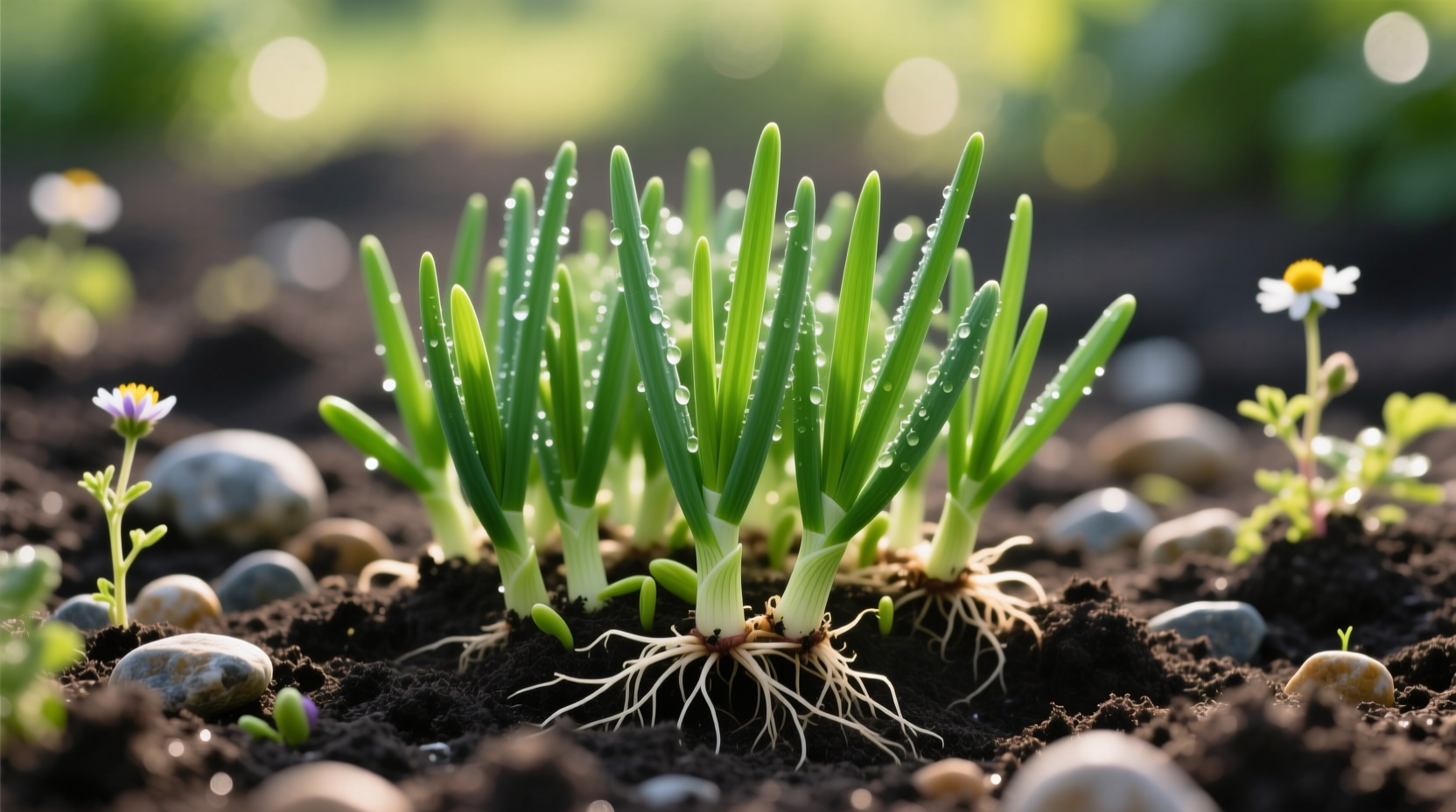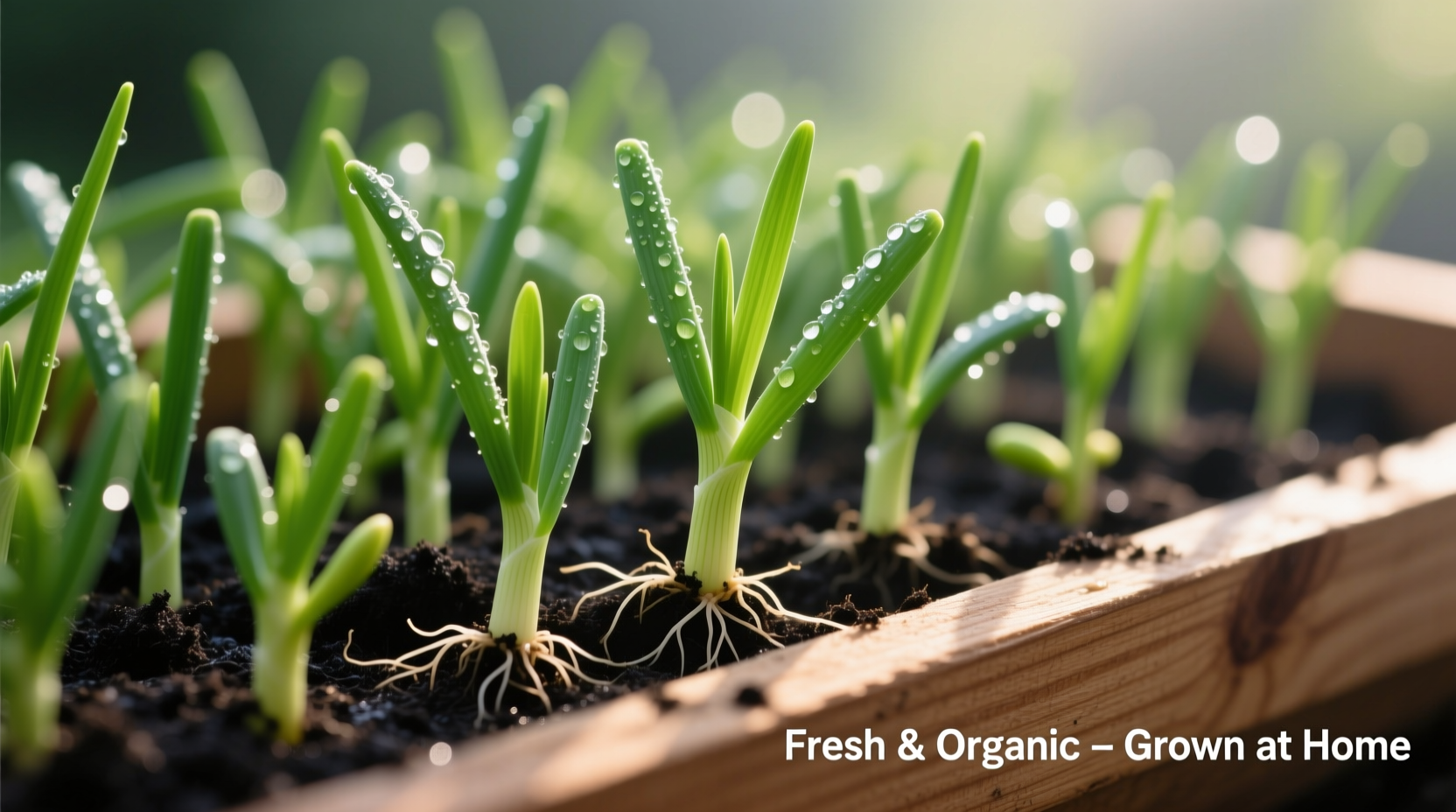Green onion seedlings thrive in well-draining soil with consistent moisture, requiring 6-8 hours of sunlight daily. Plant seeds 1/4 inch deep in spring after last frost, spacing them 1-2 inches apart. Harvest begins 60-80 days after planting when stalks reach pencil thickness. Proper care prevents common issues like yellowing leaves and bolting.
Discover exactly how to grow vibrant green onion seedlings that deliver crisp, flavorful results for your kitchen. Whether you're starting your first garden or refining your technique, this guide provides science-backed methods used by professional growers to ensure healthy, productive plants from seed to harvest.
Understanding Green Onion Seedlings: More Than Just Scallions
Green onion seedlings, often called scallions or spring onions, are immature Allium fistulosum plants harvested before bulb development. Unlike mature onions, these seedlings offer a milder flavor profile with edible green stalks and small white bases. Their rapid growth cycle makes them ideal for beginner gardeners seeking quick results.
| Variety | Growth Duration | Flavor Profile | Best Growing Conditions |
|---|---|---|---|
| White Lisbon | 60-70 days | Mild, sweet | Cooler climates, partial shade |
| Evergreen Hardy White | 70-80 days | Stronger, more pungent | Full sun, well-drained soil |
| Naba | 50-60 days | Delicate, subtle | Warmer regions, consistent moisture |
Source: Cornell University Cooperative Extension Allium Cultivation Guide (2024)
Planning Your Green Onion Garden: Timing and Space Requirements
Successful green onion cultivation starts with proper planning. These cool-season crops grow best when soil temperatures reach 50°F (10°C). In most USDA hardiness zones, this means planting 2-4 weeks before your last expected frost date. For continuous harvest, plant new seeds every 2-3 weeks through early summer.
Consider these spatial requirements:
- Row spacing: Maintain 12-18 inches between rows for adequate air circulation
- Planting depth: Sow seeds 1/4 inch deep in loose soil
- Seed spacing: Place seeds 1 inch apart, thinning to 2 inches once seedlings reach 2 inches tall
- Container gardening: Use pots at least 6 inches deep with drainage holes
Step-by-Step Planting Guide for Healthy Seedlings
Follow this professional planting sequence for optimal germination and growth:
- Soil preparation: Amend garden beds with 2-3 inches of compost, ensuring pH between 6.0-7.5
- Seed selection: Choose fresh, high-quality seeds (viability decreases after 1 year)
- Sowing technique: Create shallow furrows, distribute seeds evenly, and cover lightly with soil
- Watering: Moisten soil thoroughly but avoid displacement of seeds
- Germination environment: Maintain consistent moisture until sprouts appear (7-14 days)

Caring for Your Green Onion Seedlings Through Growth Stages
Proper care transforms ordinary seedlings into exceptional culinary ingredients. Understanding the growth timeline helps anticipate plant needs:
Days 1-14: Germination phase - maintain consistent soil moisture at 60-70°F
Days 15-30: Seedling establishment - thin plants to proper spacing, begin light fertilization
Key care considerations:
- Watering: Provide 1 inch of water weekly, increasing during dry spells. Avoid overhead watering to prevent fungal issues.
- Fertilization: Apply balanced fertilizer (10-10-10) every 3-4 weeks during active growth.
- Temperature management: Protect from extreme heat (>85°F) which causes bolting.
Troubleshooting Common Green Onion Seedling Problems
Address these frequent issues before they compromise your harvest:
- Yellowing leaves: Indicates nitrogen deficiency or overwatering. Test soil and adjust watering schedule.
- Thinning plants: Caused by insufficient light or overcrowding. Ensure 6-8 hours of direct sunlight.
- Purple discoloration: Sign of phosphorus deficiency. Apply bone meal or rock phosphate.
- Pest infestations: Onion maggots and thrips require immediate action with neem oil or insecticidal soap.
According to the University of California Agriculture and Natural Resources, proper crop rotation (avoiding Allium family plants in the same spot for 3 years) reduces disease incidence by 70%.
Harvesting Techniques for Maximum Flavor and Regrowth
Timing your harvest correctly ensures peak flavor and potential regrowth:
- First harvest window: When stalks reach 6-8 inches tall and pencil thickness (about 60 days)
- Harvest method: Use sharp scissors to cut 1-2 inches above soil line for regrowth
- Full harvest: For complete removal, loosen soil and pull entire plant
- Best time to harvest: Early morning when moisture content is highest
Green onions harvested in the morning contain 15% more essential oils according to USDA Agricultural Research Service studies, enhancing both flavor and nutritional value.
Storage and Culinary Applications for Home Gardeners
Preserve your harvest and maximize kitchen use with these professional techniques:
- Short-term storage: Place cut ends in water on windowsill for continuous growth
- Refrigeration: Store in perforated plastic bag with damp paper towel for 10-14 days
- Freezing: Chop and freeze in ice cube trays with water or oil for cooking
- Culinary tip: Use white parts for cooking (higher sulfur content), green parts raw for garnish
Understanding these context boundaries ensures success: Green onions struggle in waterlogged soils and extreme heat above 85°F. They're unsuitable for deep shade conditions but tolerate partial shade better than bulb onions. Container gardening works well in urban settings but requires more frequent watering.
Advanced Growing Techniques for Exceptional Results
Elevate your green onion cultivation with these professional methods:
- Succession planting: Stagger plantings every 2-3 weeks for continuous harvest
- Winter harvesting: In mild climates, mulch heavily for year-round production
- Indoor growing: Use grow lights for 12-14 hours daily during winter months
- Flavor enhancement: Reduce watering slightly 3-5 days before harvest to concentrate flavors
Professional growers at University of Minnesota Extension report 25% higher yields when using black plastic mulch, which warms soil and suppresses weeds.











 浙公网安备
33010002000092号
浙公网安备
33010002000092号 浙B2-20120091-4
浙B2-20120091-4